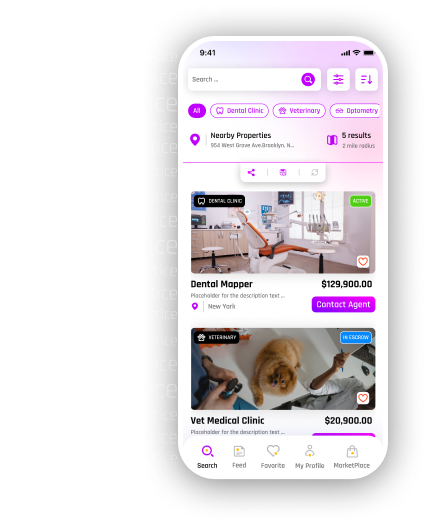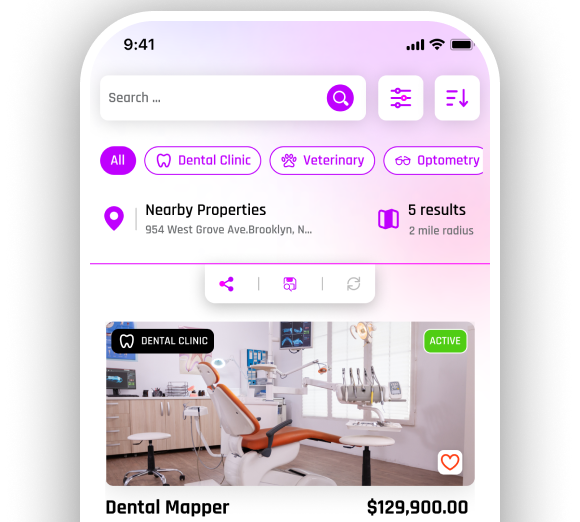How to Calculate Optometric Practice Valuations?

Whether you’re considering acquiring an optometry practice for sale or expanding your portfolio through strategic investments, understanding how to accurately value an optometric practice is essential. For buyers, overpaying or underestimating the value can significantly impact ROI, cash flow, and future sale potential.
Optometry practices are unique compared to other healthcare businesses. Revenue streams, patient loyalty, location, equipment, and doctor retention all play into the equation. So how do you go beyond the asking price and get a true sense of worth?
In this blog, we’ll discuss the essentials of optometric practice valuation from a buyer's perspective, highlight key financial metrics, and explore methods for evaluating both tangible and intangible assets. Whether you're a private investor, group practice buyer, or using the PracticeFinder App to discover listings, this breakdown will help you make informed acquisition decisions.
Key Elements That Influence Optometric Practice Value
Before diving into math and multiples, it’s important to understand the qualitative and quantitative variables that influence an optometry practice’s value. Here are some core components:
1. Revenue and Profitability
Look at gross revenue over the past 3–5 years, but don’t stop there. What matters more is EBITDA (Earnings Before Interest, Taxes, Depreciation, and Amortization), which tells you the true cash-generating capacity of the practice.
2. Owner Dependency
How reliant is the practice on the current optometrist? If patient retention hinges on one person, the transition risk is higher, potentially reducing the value.
3. Patient Base and Demographics
Recurring patients, strong referral networks, and high new-patient rates drive value. Location demographics—like age, income, and insurance coverage—also matter.
4. Lease Terms or Ownership
Whether the practice owns or leases its facility impacts value. A favorable lease or opportunity to purchase a medical office for sale could increase investment appeal.
5. Equipment and Technology
Modern optometry equipment for sale, such as digital refraction systems and OCTs, can boost value, especially when recently purchased and well-maintained.
Steps in Calculating Optometric Practice Valuations
Start With Net Earnings (Adjusted EBITDA)
EBITDA is the most widely accepted metric in healthcare mergers and acquisitions. To calculate it, start with net income and add back interest, taxes, depreciation, and amortization. Then, adjust for owner-specific expenses (like personal car leases, family member salaries, or non-recurring costs) to get a clearer financial picture.
Example:
Let’s say an optometry practice shows:
-
Net income: $180,000
-
Interest: $5,000
-
Depreciation: $8,000
-
Owner salary adjustments: $22,000
Adjusted EBITDA = $180,000 + $5,000 + $8,000 + $22,000 = $215,000
Apply a Valuation Multiple
Once you have the adjusted EBITDA, multiply it by a market-based valuation multiple. This is where art meets science.
In the optometry world, EBITDA multiples typically range from 2.5x to 4.5x, depending on:
-
Market trends
-
Location (urban vs. rural)
-
Competition
-
Growth potential
-
Revenue diversity (contacts, frames, specialty services)
Using our example:
If the practice is in a high-demand area with a modern setup, you might apply a 4x multiple.
$215,000 x 4 = $860,000 valuation.
Factor in Tangible Assets
Tangible assets include optometry equipment for sale, frame inventory, furniture, computers, and office fixtures. Most buyers calculate this as part of the practice value, but sometimes it’s listed separately.
Make sure to:
-
Assess the age and condition of major equipment
-
Request depreciation schedules
-
Verify ownership (leased vs. owned equipment)
If the tangible assets add another $100,000 in value, your revised valuation becomes $960,000.
Analyze the Real Estate Component
Is the practice leasing or does it come with an associated commercial real estate property?
-
If leased, review terms—short leases with no renewal options could hurt long-term value.
-
If owned, a medical office for sale could present an added asset (and cost).
Buyers often structure deals to purchase the practice and lease the space long-term or buy both if the numbers make sense. Be prepared to separate real estate valuation from business valuation.
Adjust for Intangible Value
Intangibles like brand reputation, goodwill, staff longevity, patient reviews, and operational systems don’t show up on a balance sheet—but they affect the deal.
One way to account for intangible value is to look at retention risk. If the doctor-owner plans to stay on for a few years post-sale, the goodwill is stronger. If they’re leaving immediately, you may factor in a slight value deduction.
Don't Forget Practice Transition Planning
Buying an optometry practice is only as successful as the transition that follows. Make sure to:
-
Structure an earn-out if owner retention is uncertain
-
Build incentives for staff retention
-
Engage a qualified optometry transition broker to support smooth changeover
Having a transition plan in place not only reduces risk but can also be a negotiating point during the sale.
Crunching the Numbers: Is It a Good Deal?
Use a blend of methods:
-
Market-Based Valuation (Comparable Sales): What are similar practices in the area selling for on the PracticeFinder App?
-
Income Approach: Based on future earnings (like a DCF analysis).
-
Asset-Based Approach: Especially if the practice isn’t profitable yet.
Buyers should evaluate these alongside financing opportunities. Many deals are closed using practice financing from healthcare-focused lenders who understand optometric business models.
Take the Guesswork Out of Optometric Practice Valuation
Understanding how to calculate the value of an optometric practice isn’t just for accountants—it’s an essential skill for serious buyers. While no formula is perfect, a combination of EBITDA, asset value, market data, and transition potential will help you arrive at a fair and profitable valuation.
Ultimately, the best deals are based on strong fundamentals, solid growth potential, and strategic alignment—not just a low price.
Looking to invest in a growing optometry business? The PracticeFinder App connects buyers to vetted optometry practices for sale across the U.S.
From valuations to transition support, we help you find the right fit—faster.

